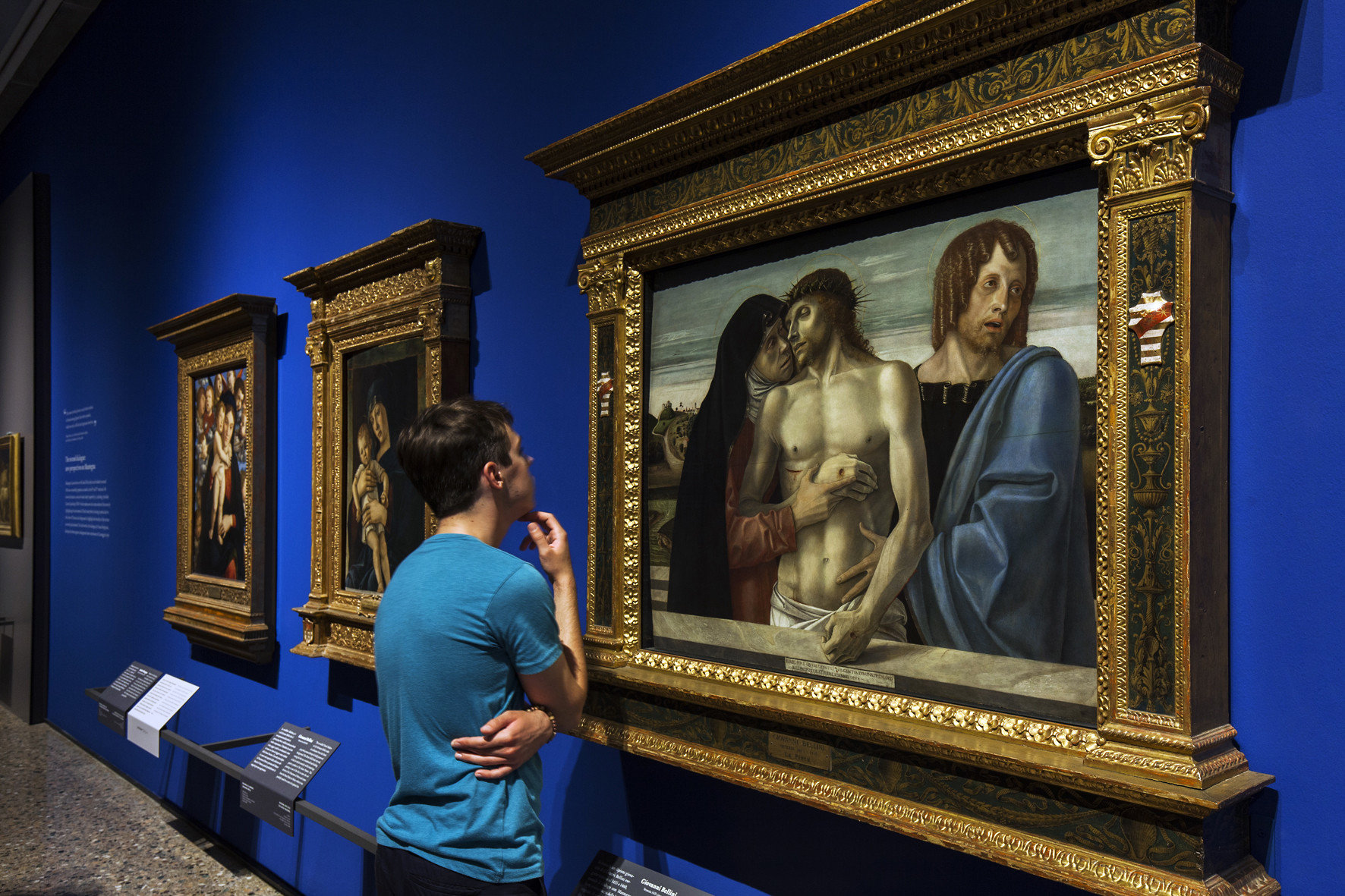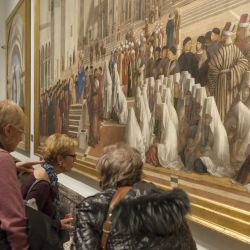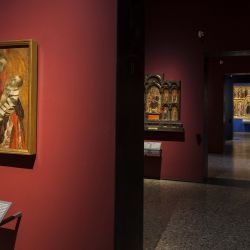
Download this article:
The Pinacoteca di Brera art gallery in Milan is currently restructuring its rooms with a new approach to exhibitions involving a series of “Dialogues” between large paintings with related religious themes. ERCO LED lighting tools raise each masterpiece becomes more uplifting.
What would be the conversation between Perugino and Raphael? Or between two other great masters of art history? The Pinacoteca di Brera answers this question with a series of “Dialogues”, matching a selection of masterpieces from the museum’s own collection with related pieces on loan. The first dialogue, “Perugino and Raphael, the Marriage of the Virgin”, puts the two frequently contrasted portrayals of the marriage ceremony between Mary and Joseph side by side for the first time, enabling a comparative analysis of the originals. The “Dialogues” have since continued with themes including “Andrea Mantegna: New Perspective” and “Dinner Conversation with Caravaggio”.
Large paintings with religious themes
Founded by Empress Maria Theresa of Austria in the 18th century, when Lombardy was still under the sovereignty of the Habsburg dynasty, the Pinacoteca di Brera expanded a few decades later thanks to Napoleon, who filled it with numerous large paintings depicting religious scenes, which had been confiscated from churches and monasteries at the time of the dissolution. This explains why the collection comprises chiefly religious works that can be admired at the Pinacoteca di Brera today, many of them large altarpieces such as the “Coronation of the Virgin” by Andrea di Bartolo and Giorgio di Andrea. The collection has since grown to feature iconic works of the 20th century, including “Enfant Gras” by Amedeo Modigliani and “Head of a Bull” by Pablo Picasso.
New layout for a strong emotional charge
Housed in the Palazzo Brera, the Pinacoteca di Brera is situated in the centre of historic Milan alongside the Academy of Fine Arts. The present building largely dates from the 17th century, when it was constructed in Baroque style by architect Francesco Maria Richini. Originally a Jesuit college, from the mid-18th century, it was used to accommodate several of the city’s cultural and scientific institutions. The “Dialogues” hosted by the Pinacoteca tie in with the transformation of its rooms. Arranged chronologically across six centuries, their colour schemes are designed to reflect the various historical periods and assist in guiding visitors around and, perhaps more importantly, to emphasise the colour palette of each painting thereby enhancing its sublime essence. For example, the 15th century is represented by ultramarine, the colour typically chosen to depict the robes of the Virgin Mary.
Rich colours intensified by brilliant light
As well as the restructuring, the art gallery is undergoing a complete relighting, due to be completed in 2018. ERCO spotlights from the Optec and Pollux ranges are being used. Based entirely on LED technology developed by ERCO, the new lighting renders the works of art in brilliant colours. On the CRI scale, ERCO LEDs offer the best possible colour rendering, with a Ra >90 for warm white light and a Ra >80 for neutral white light. LEDs in ERCO luminaires with white light have a continuous spectrum without emphasis on individual spectral ranges by adding coloured LEDs. This guarantees a faithful reproduction of colours with consistent depth and vibrancy throughout the life of the luminaire. Thanks to superior light quality, the art on display at the Pinacoteca di Brera has never looked more alluring and richer in colour. Even subtle transitions between colours can now be distinguished, giving three-dimensional expression to features such as the contours of Christ in the “Pietà” painting by Giovanni Bellini.
Project data
Project: Pinacoteca di Brera, Milan / Italy
Architecture: Alessandra Quarto, Milan / Italy
Photography: Frieder Blickle, Hamburg / Germany and Dirk Vogel, Dortmund / Germany
Products: Optec, Pollux
Photo credits: © ERCO GmbH, www.erco.com, photography: Frieder Blickle and Dirk Vogel
About ERCO
The ERCO Light Factory in Lüdenscheid is a leading international specialist in architectural lighting using LED technology. The family business, founded in 1934, now operates as a global player with over 60 subsidiaries, branches and agencies in over 40 countries worldwide. Since 2015 ERCO's portfolio has been 100% LED. Inspired by "light digital" as its leitmotif, ERCO in Lüdenscheid develops, designs and produces digital luminaires with focus on photometrics, electronics and design. Working closely with architects, lighting designers and engineers, ERCO develops lighting tools used primarily for applications in the following fields: Work, Shop, Culture, Community, Hospitality, Living, Public and Contemplation. ERCO understands digital light as the fourth dimension of architecture - providing highly precise and efficient lighting solutions to support creative designers in turning their visions into reality.
If you require any further information on ERCO or image material, please visit us at www.erco.com/presse. We can also provide you with material on projects worldwide for your media coverage.
Relevant image material
© ERCO GmbH, www.erco.com
© ERCO GmbH, www.erco.com
© ERCO GmbH, www.erco.com
© ERCO GmbH, www.erco.com
© ERCO GmbH, www.erco.com
© ERCO GmbH, www.erco.com
© ERCO GmbH, www.erco.com
© ERCO GmbH, www.erco.com







